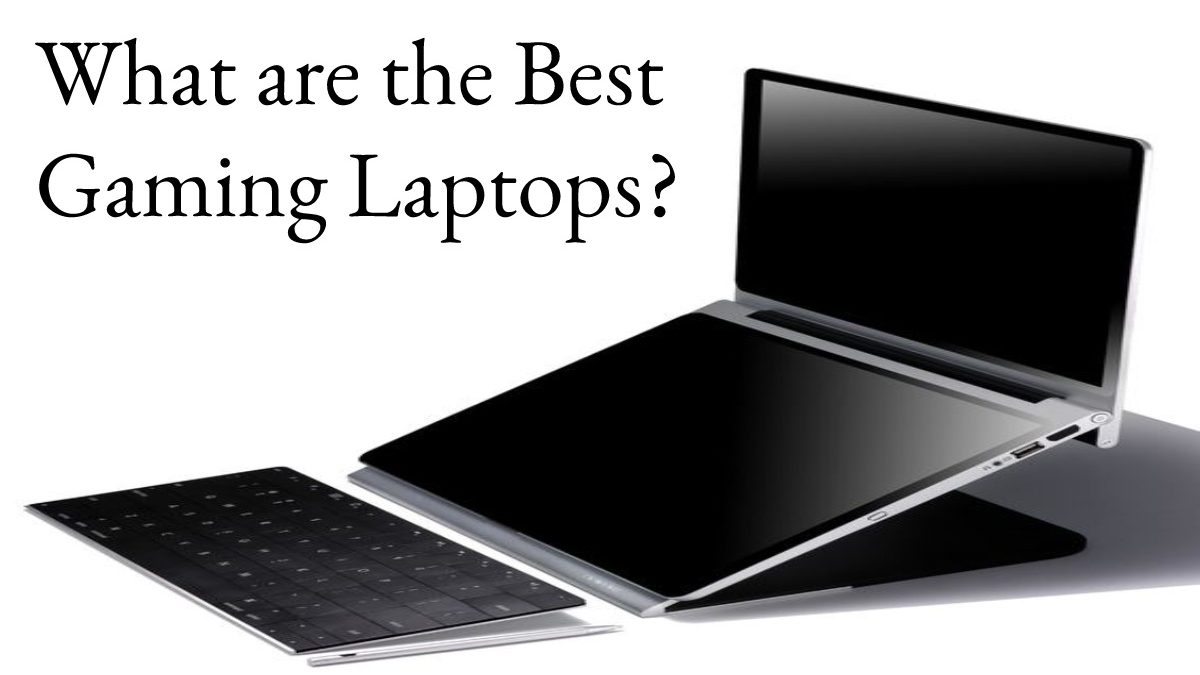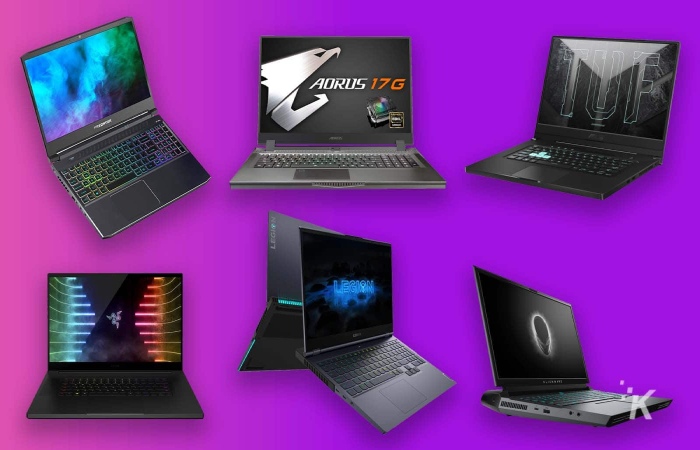Gaming laptops have originated a long way in recent years, with the unwieldy designs of the past replaced by polish gems with ever-improving power and capabilities.
Table of Contents
The Best Gaming Laptops
- Razer Blade 14
- Asus ROG Strix G15
- Lenovo Legion 5 Pro
- Asus ROG Zephyrus G14
- MSI GS66 Stealth
- Acer Predator Triton 300 SE
- Asus ROG Flow X13
- HP Loser 16
1. Razer Blade 14
Gamers need something small and light but with a lot of power.
When you think of the best gaming laptops, you might think of a thick frame with aggressive angles and ventilation throughout. The Razer Blade 14 couldn’t be more diverse. Razer laptops have successfully changed from the slimmer gaming laptops can be without sacrificing the performance you’ve come to expect from them. The Razer Blade 14 appears to be the realization of that vision.
Despite having a smaller 14-inch screen, the Blade 14 features an RTX 3080 graphics card. It’s also the first Razer laptop to adopt AMD’s Ryzen 5000 processors, ideal for ultra-compact Razer gaming laptops—trying to choose between this and the Razer Blade 15? The 15-inch model will produce a touch better frame rates, but the 14-inch model is smaller, cheaper, and has longer battery life. As a result, it makes it Razer’s best offering and the best overall gaming laptop you can buy right now.
2. Asus ROG Strix G15 Advantage
Who needs the best performance at the best price.
AMD has made a name for the issue in gaming laptops, beating out Intel in many of the best gaming laptops. But, AMD-only gaming laptops are rare, which is unfortunate given how powerful they are. The ROG Strix G15 Advantage is the flagship model.
It has the Ryzen 9 5900HX processor and the Radeon RX 6800M graphics card, a true competitor to the Nvidia RTX 3080. Despite being much cheaper, the ROG Strix G15 Advantage packs high performance at a better price. Sure, it’s far from a subtle and elegant design, drawing inspiration from racing and sports, as is familiar with the Strix brand. Nevertheless, you’ll love the ROG Strix G15 Advantage’s price-performance ratio if you don’t mind the design and extra weight.
3. Lenovo Legion 5 Pro
Who doesn’t mind a little more volume in exchange for higher frame rates?
Is it tired of thin and light gaming laptops that sacrifice performance for portability? If that’s the case for you, the Lenovo Legion 5 Pro should be at the top of your list. It is a more extensive and thicker machine than the Razer Blade 15 or the MSI GS66 Stealth, but it offers excellent gaming performance and a great overall experience.
The 16-inch screen has a 16:10 ratio with high resolution and a high refresh rate, precisely what you need to run an RTX 370 card and a Ryzen 5000 CPU. We don’t love the chassis design; it seems disjointed and inconsistent. But we appreciate the slim bezels, and in the end, you won’t be disappointed by the performance.
4. Asus ROG Zephyrus G14
It is for players and content creators.
The Zephyrus G14 is unlike most gaming laptops. For starters, it is very light and comes in at just 3.5 pounds (1.5 kilograms), and uses a 14-inch screen and not a 15-inch one like the rest of its kind. The result is a tiny laptop, perhaps the smallest out there at this power level.
Inside, it is powere by an octa-core Ryzen 4000 processor with impressive multitasking capabilities, making it suitable for video editing, 3D modeling, or content creation. The Asus ROG Zephyrus G14 delivers excellent gaming performance, of course. Selections are a GTX 1650, GTX 1660 Ti, or RTX 2060; with the latter, most games can run at 60 frames per second.
5. MSI GS66 Stealth
Who wants a stylish laptop without sacrificing performance.
Gaming in 1440p is possible, and the MSI GS66 Stealth is one of the few options available. It starts with the control of the Nvidia RTX 3080, which allows the system to increase frame rates, even on a native 1440p display, without any issues. In addition, MSI has a model with 1080p resolution and up to 360Hz refresh rate. The slim and discreet chassis of the MSI GS66 Stealth is its other strong point.
It’s no bigger or heavier than the Razer Blade 15, but it keeps surface temperatures lower and the fan quieter. Unfortunately, neither its touchpad nor keyboard are pretty, but the MSI GS66 Stealth is an excellent alternative if you want it for gaming.
6. Acer Predator Triton 300 SE
Who wants a little 14-inch laptop with excellent cooling.
The Acer Predator Triton 300 SE feels like a revolutionary laptop, with a 14-inch screen and a 35W Intel processor. It’s unique, though it’s aiming for a goal that the ROG Zephyrus G14 already achieved on the AMD side. Both have an Nvidia RTX 3060 GPU, a surprisingly slim chassis, and a medium refresh rate.
The Zephyrus G14 beats the Triton 300 SE in some games thanks to its higher cooling capacity. Unfortunately, that also happens to a strong point of Triton 300 SE. Which stays more relaxed and quieter during operation, both when gaming and when working. It’s a hard choice between the two, but if you’ll be using your computer for work and play, the Predator Triton 300 SE wins the game. Today, if you want something a little bigger and more powerful, the 16-inch Predator Triton 500 SE might be a much better option.
7. Asus ROG Flow X13
who wants the smallest gaming laptop.
The ROG Flow X13 is famous for its ability to connect to the XG Mobile, a remarkably small external GPU that uses a proprietary PCIe interface. But Asus also sells a standalone model that draws graphics from an RTX 3050 Ti card. To consider the ROG Flow X13, you need to be attracted by the size of this laptop. Otherwise, you’ll be disappointed by the size and performance. But for a compact 2-in-1 convertible that you can take to school and play some games with at decent frame rates
The Asus ROG Flow X13 falls into a different category. The Razer Blade Stealth 13 is technically its closest rival, but it still has older hardware.
8. HP Loser 16
Someone who wants a bona fide gaming laptop
If you want a correct gaming laptop, you want a real GPU. Unfortunately, integrated graphics are not allowed. But, thanks to the Victus 16 from HP, it is possible. So you get that, but you also get an Intel 11th Gen Core i5-11400H H-series processor, 8GB of RAM, a 256GB SSD, a 16.1-inch Full HD IPS display, and an Nvidia GeForce GTX 1650.
You can change the GPU to an RTX 3050 Ti and bump up the RAM capacity to 16GB, and while it sounds incredible. The Victus 16 is a spare for HP’s previous entry-level gaming laptop, the Pavilion Gaming 15. But it’s an upgrade with a better thermal design to keep components cooler and faster. You get OMEN Gaming Hub software pre-installed to allow Undervoltage and other performance tweaking. A solid yet minimalist design lets you use the Victus 16 in a boardroom and LAN party.
Conclusion
These were the best gaming laptops. You can easily play heavy games without any lag or frame drops with such a setup. After extensive research, the list here helps you choose the best product if you are planning to buy a gaming laptop.


